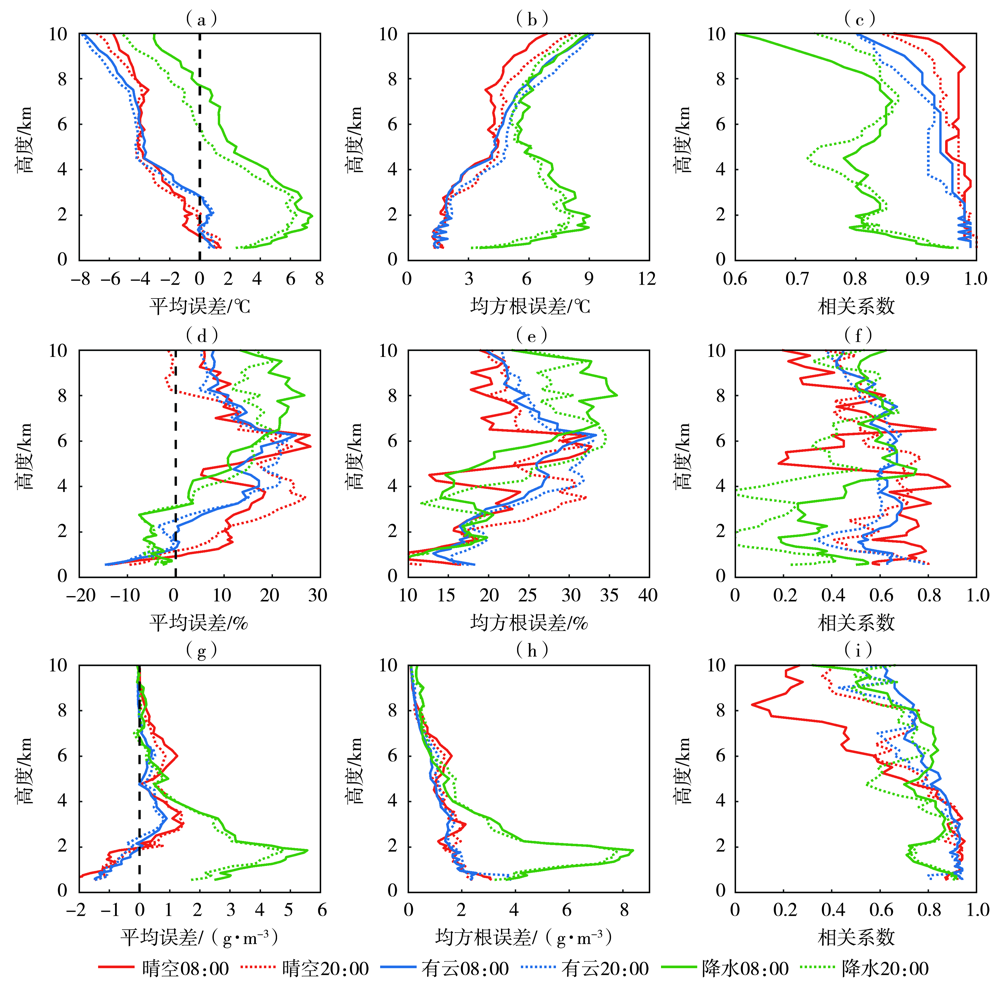| [1] |
张瑞生. 大气微波遥感[M]. 济南: 山东科学技术出版社, 1989.
|
| [2] |
王婉, 雷恒池, 聂皓浩, 等. 基于机载微波辐射计探测大气水汽通道饱和问题研究[J]. 气象学报, 2021, 79(3):509-520.
|
| [3] |
傅佩玲, 胡东明, 张羽. 2017年5月7日广州特大暴雨微物理特征及其触发维持机制分析[J]. 气象, 2018, 44(4):500-510.
|
| [4] |
黄润恒, 邹寿祥. 两波段微波辐射计遥感云天大气的可降水和液态水[J]. 大气科学, 1987, 11(4):397-403.
|
| [5] |
黄治勇, 徐桂荣, 王晓芳, 等. 基于地基微波辐射计资料对咸宁两次冰雹天气的观测分析[J]. 气象, 2014, 40(2):216-222.
|
| [6] |
李聪, 姜有山, 姜迪, 等. 一次冰雹天气过程的多源资料观测分析[J]. 气象, 2017, 43(9):1084-1094.
|
| [7] |
张秋晨, 王俊, 李雪. 地基微波辐射计资料在对流云降水前的变化特征初探[J]. 高原气象, 2018, 37(6):1578-1589.
DOI
|
| [8] |
CHAN P W, HON K K. Application of ground-based multichannel microwave radiometer in the nowcasting of intense convective weather through instability indices of the atmosphere[J]. Meteorologische Zeitschrift, 2011, 20(4):431-440.
DOI
URL
|
| [9] |
MADHULATHA A, RAJEEVAN M, VENKAT R M, et al. Nowcasting severe convective activity over southeast India using ground-based microwave radiometer observation[J]. Journal of Geophysical Research Atmospheres, 2013, 118(1):1-13.
DOI
URL
|
| [10] |
党张利, 张京朋, 曲宗希, 等. 微波辐射计观测数据在降水预报中的应用[J]. 干旱气象, 2015, 33(2):340-343.
|
| [11] |
郭丽君, 郭学良. 利用地基多通道微波辐射计遥感反演华北持续性大雾天气温、湿度廓线的检验研究[J]. 气象学报, 2015, 73(2):363-381.
|
| [12] |
郭丽君, 郭学良. 北京2009—2013年期间持续性大雾的类型、垂直结构及物理成因[J]. 大气科学, 2016, 40(2):296-310.
|
| [13] |
WARE R, CARPENTER R, GÜLDNER J, et al. A multichannel radiometric profiler of temperature, humidity and cloud liquid[J]. Radio Science, 2003, 38(4):8079. DOI: 10.1029/2002RS002856.
DOI
|
| [14] |
IASSAMEN A, SAUVAGEOT H, JEANNIN N, et al. Distribution of tropospheric water vapor in clear and cloudy conditions from microwave radiometric profiling[J]. Journal of Applied Meteorology and Climatology, 2009, 48(3):600-615.
DOI
URL
|
| [15] |
张文刚, 徐桂荣, 廖可文, 等. 降水对地基微波辐射计反演误差的影响[J]. 暴雨灾害, 2013, 32(1):70-76.
|
| [16] |
张文刚, 徐桂荣, 廖可文, 等. 地基微波辐射计探测精度的变化特征分析[J]. 暴雨灾害, 2017, 36(4):373-381.
|
| [17] |
王志诚, 张雪芬, 茆佳佳, 等. 不同天气条件下地基微波辐射计探测性能比对[J]. 应用气象学报, 2018, 29(3):282-295.
|
| [18] |
刘红燕. 三年地基微波辐射计观测温度廓线的精度分析[J]. 气象学报, 2011, 69(4):719-728.
|
| [19] |
徐桂荣, 张文刚, 万霞, 等. 地基微波辐射计反演的青藏高原东侧甘孜大气温湿廓线分析[J]. 暴雨灾害, 2019, 38(3):238-248.
|
| [20] |
敖雪, 王振会, 徐桂荣, 等. 微波辐射计亮温观测质量控制研究[J]. 气象科学, 2013, 33(2):130-137.
|
| [21] |
王云, 王振会, 李青, 等. 基于一维变分算法的地基微波辐射计遥感大气温湿廓线研究[J]. 气象学报, 2014, 72(3):570-582.
|
| [22] |
茆佳佳, 张雪芬, 王志诚, 等. 多型号地基微波辐射计亮温准确性比对[J]. 应用气象学报, 2018, 29(6):724-736.
|
| [23] |
黄兴友, 张曦, 冷亮, 等. 基于MonoRTM模型的微波辐射计反演方法研究[J]. 气象科学, 2013, 33(2):138-145.
|
| [24] |
车云飞, 马舒庆, 杨玲, 等. 云对地基微波辐射计反演湿度廓线的影响[J]. 应用气象学报, 2015, 26(2):193-202.
|
| [25] |
鲍艳松, 钱程, 闵锦忠, 等. 利用地基微波辐射资料反演0~10 km大气温湿廓线试验研究[J]. 热带气象学报, 2016, 32(2):163-171.
|
| [26] |
刘亚亚, 毛节泰, 刘钧, 等. 地基微波辐射计遥感大气廓线的BP神经网络反演方法研究[J]. 高原气象, 2010, 29(6):1514-1523.
|
 ), CHEN Xiaomin2, DENG Chengzhi1, LONG Meixi1
), CHEN Xiaomin2, DENG Chengzhi1, LONG Meixi1









